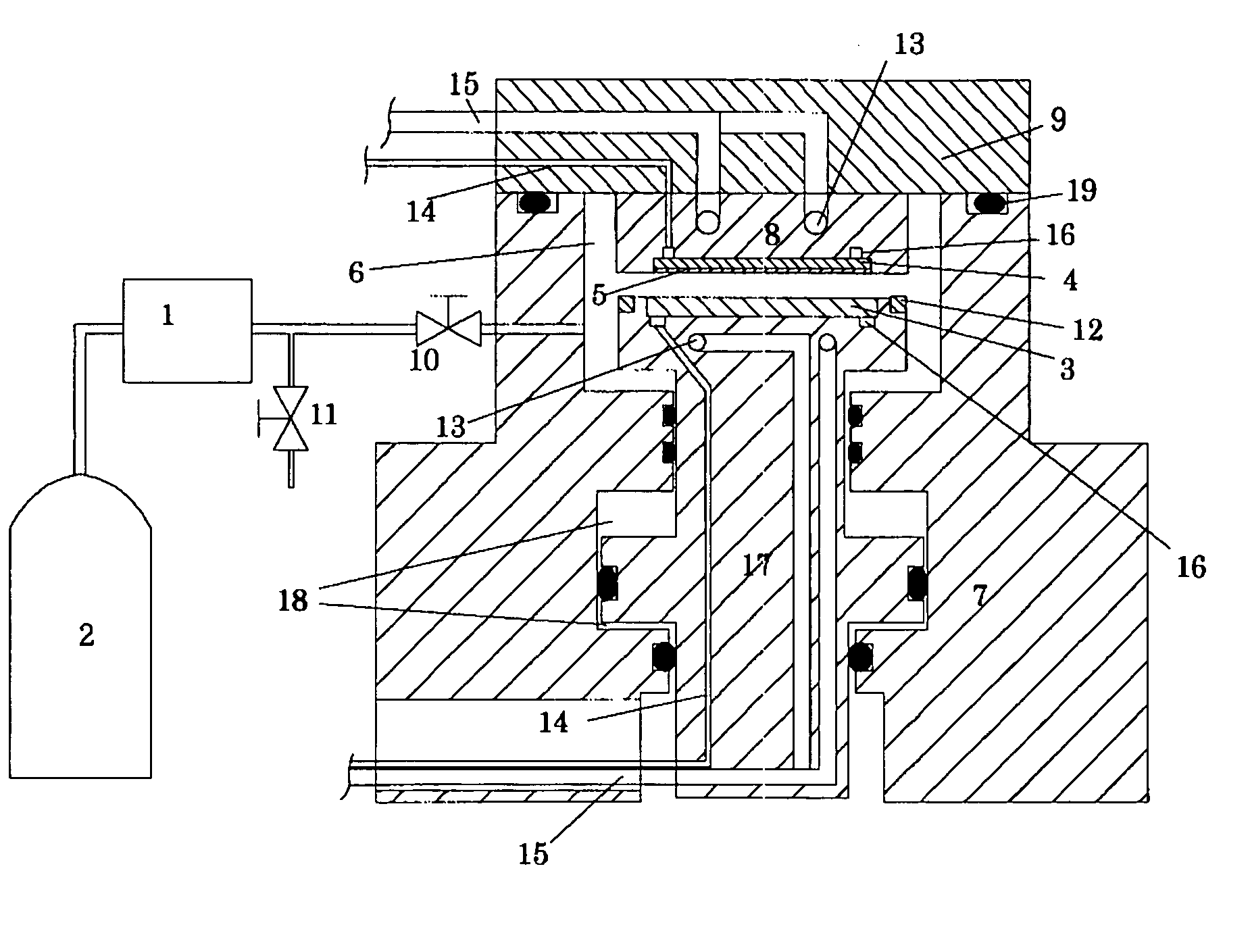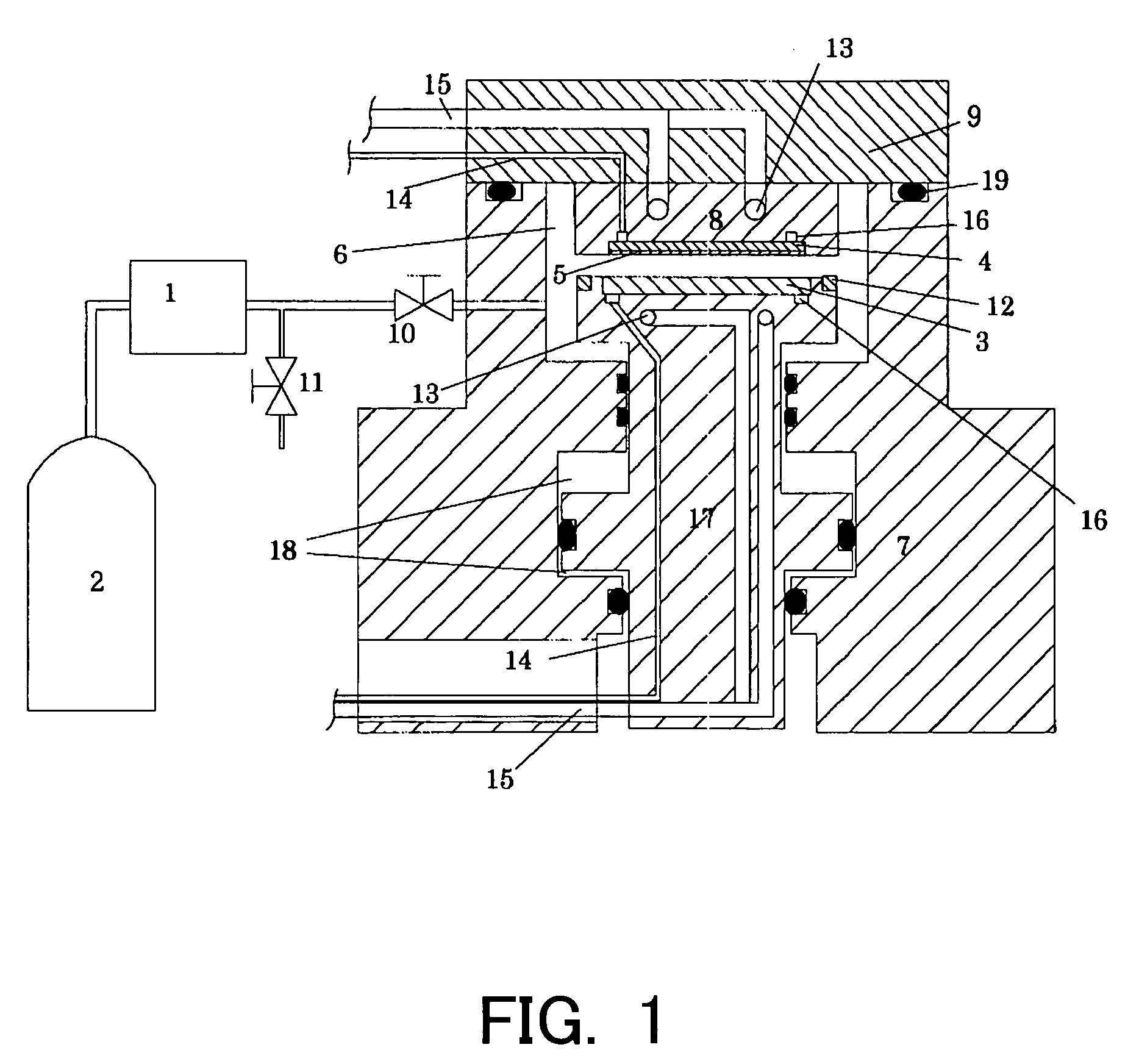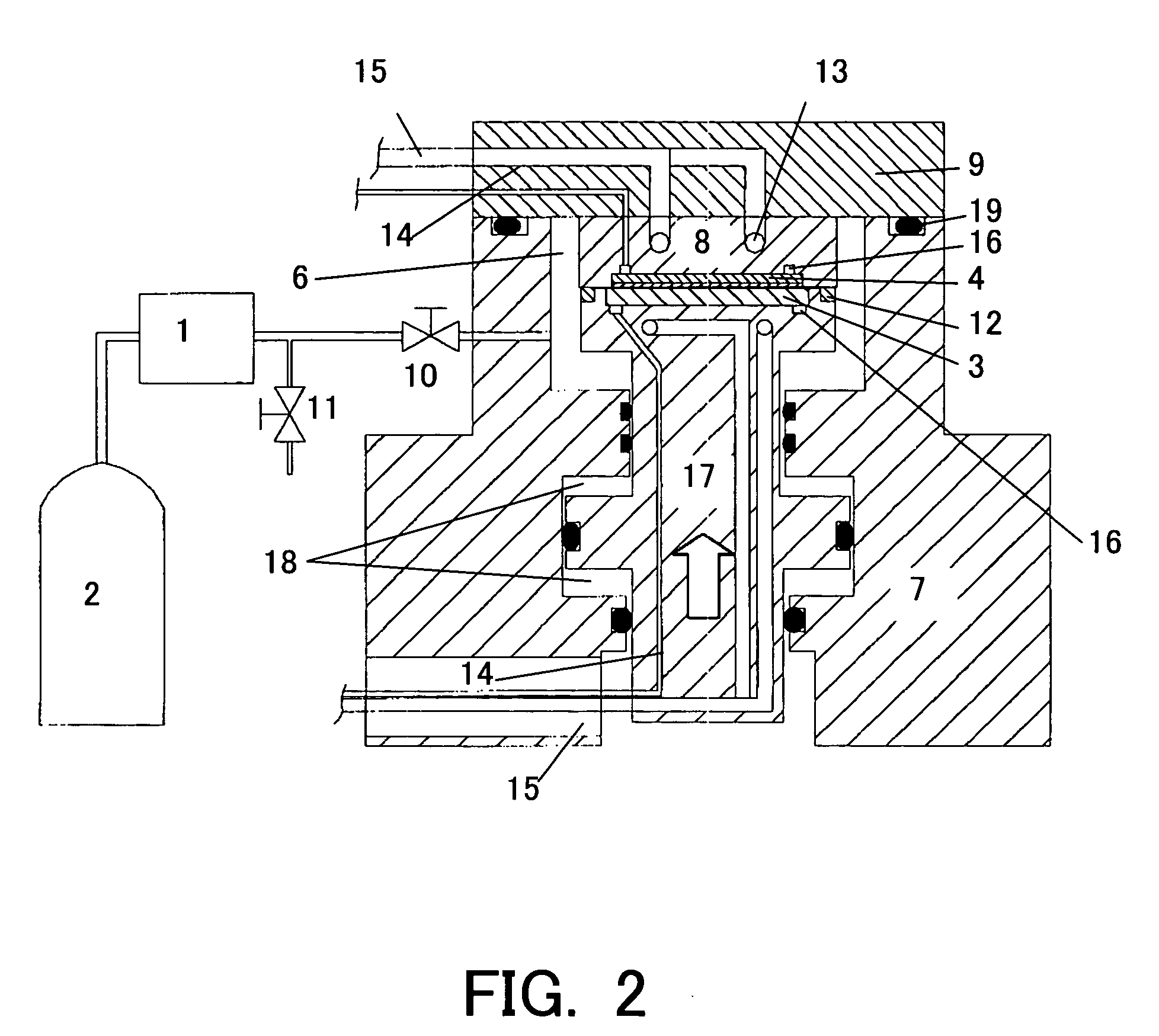Imprint manufacture method
- Summary
- Abstract
- Description
- Claims
- Application Information
AI Technical Summary
Benefits of technology
Problems solved by technology
Method used
Image
Examples
first embodiment
[0060]FIG. 1 shows an NIL apparatus for use with the first embodiment. This embodiment presses a mold 3 having fine convex and concave patterns against a polymer membrane 5 as resist on a substrate 4, such as silicon wafer and quartz glass, while bringing high-pressure CO2 or supercritical CO2 into contact with the polymer membrane 5, and thereby transfers the fine pattern onto the polymer membrane 5.
[0061]This embodiment fills a closed chamber 6 with supercritical CO2 and uses an apparatus that presses in the chamber 6. CO2 gas supplied to a supercritical fluid generator 1 from a CO2 tank 2 enters a supercritical state and is then supplied to the outside by the opening and closing of a built-in electromagnetic valve. Supercritical CO2 can have arbitrary pressure and temperature, but higher pressure would preferably increase infiltration into solid polymer and lower Tg, viscosity and surface tension. However, excessively high pressure would cause difficulties in closing and sealing,...
second embodiment
[0074]FIG. 3 shows a NIL apparatus for use with the second embodiment. This embodiment presses a mold 300 having fine convex and concave patterns against resist (polymer membrane) 200 on a substrate 100, such as silicon wafer and quartz glass, while bringing high-pressure CO2 or supercritical CO2 into contact with the resist 200, thereby transferring a fine pattern onto the polymer membrane.
[0075]For an easy design of a pressure container, the present invention prefers the use of compressed CO2 or supercritical CO2 for filling the pressure chamber. This embodiment forms the high-pressure chamber as an outer ring 110 outside a glass substrate 100 contacts a piston 270. High-pressure CO2 introduced through a channel 320 moves up the outer ring 110. Even when the substrate 100 does not contact the mold 300, such as a stamper, an O-ring 120 contacts the piston 270 and maintains the high-pressure gas in the chamber.
[0076]A description will be given of the press mechanism of the instant e...
third embodiment
[0093]The imprint method similar to that of the first embodiment introduced silicon oil (with a molecular weight of 1000) as water repellency agent into the reserve tank 250, dissolved it in supercritical CO2, and infiltrated it into the resist 200. The third embodiment improved release characteristics between the mold 300 and the resist 200, whereby the substrate 100 does not stick to the mold 300 and / or there was no transferring problem.
[0094]Further, the present invention is not limited to these preferred embodiments, and various variations and modifications may be made without departing from the scope of the present invention. For example, these embodiments used compressed CO2 or supercritical CO2, but the present invention does not limit the compressed gas or supercritical fluid to CO2 and may use compressed He, supercritical He, or the like.
PUM
| Property | Measurement | Unit |
|---|---|---|
| Length | aaaaa | aaaaa |
| Pressure | aaaaa | aaaaa |
| Pressure | aaaaa | aaaaa |
Abstract
Description
Claims
Application Information
 Login to View More
Login to View More - R&D
- Intellectual Property
- Life Sciences
- Materials
- Tech Scout
- Unparalleled Data Quality
- Higher Quality Content
- 60% Fewer Hallucinations
Browse by: Latest US Patents, China's latest patents, Technical Efficacy Thesaurus, Application Domain, Technology Topic, Popular Technical Reports.
© 2025 PatSnap. All rights reserved.Legal|Privacy policy|Modern Slavery Act Transparency Statement|Sitemap|About US| Contact US: help@patsnap.com



